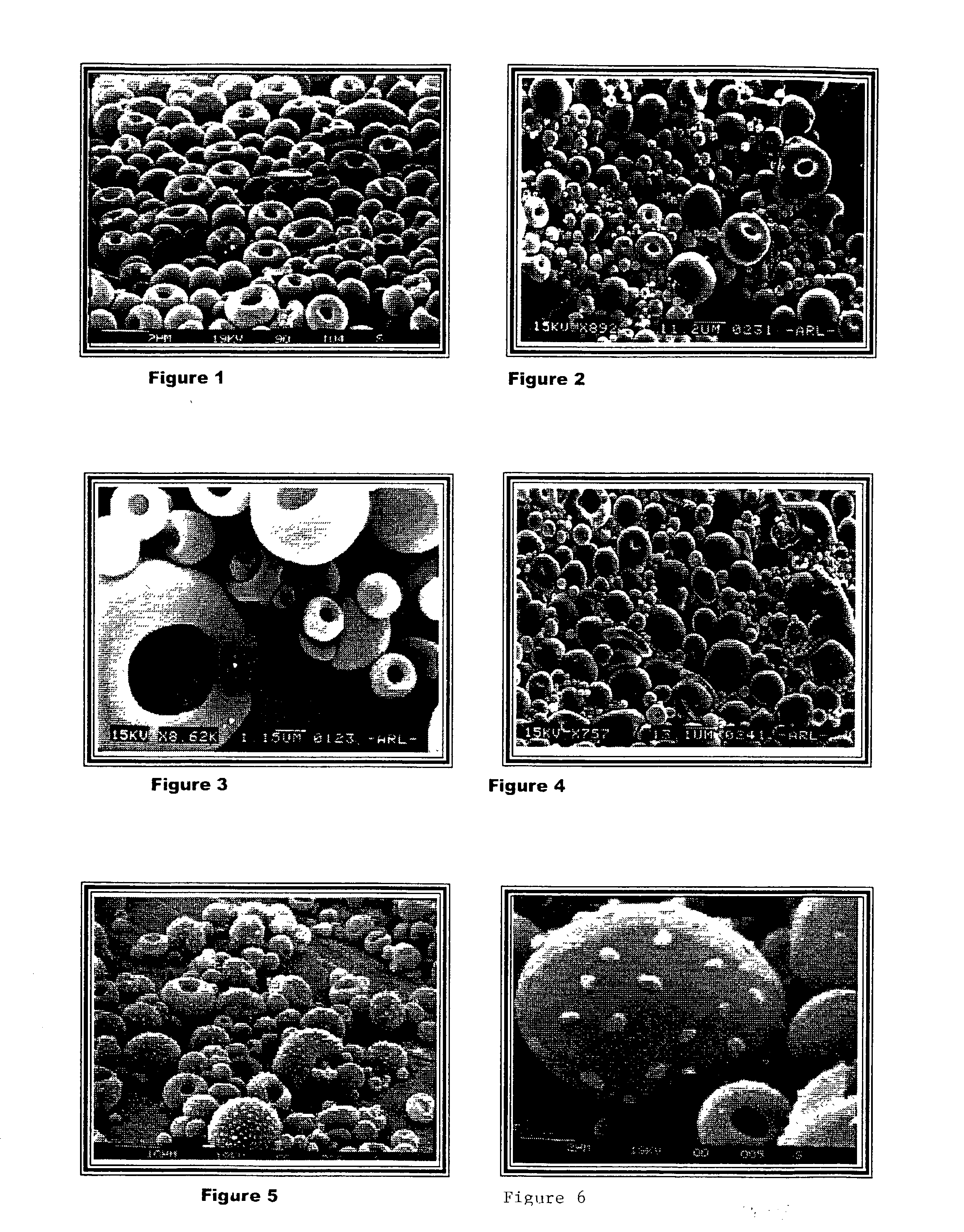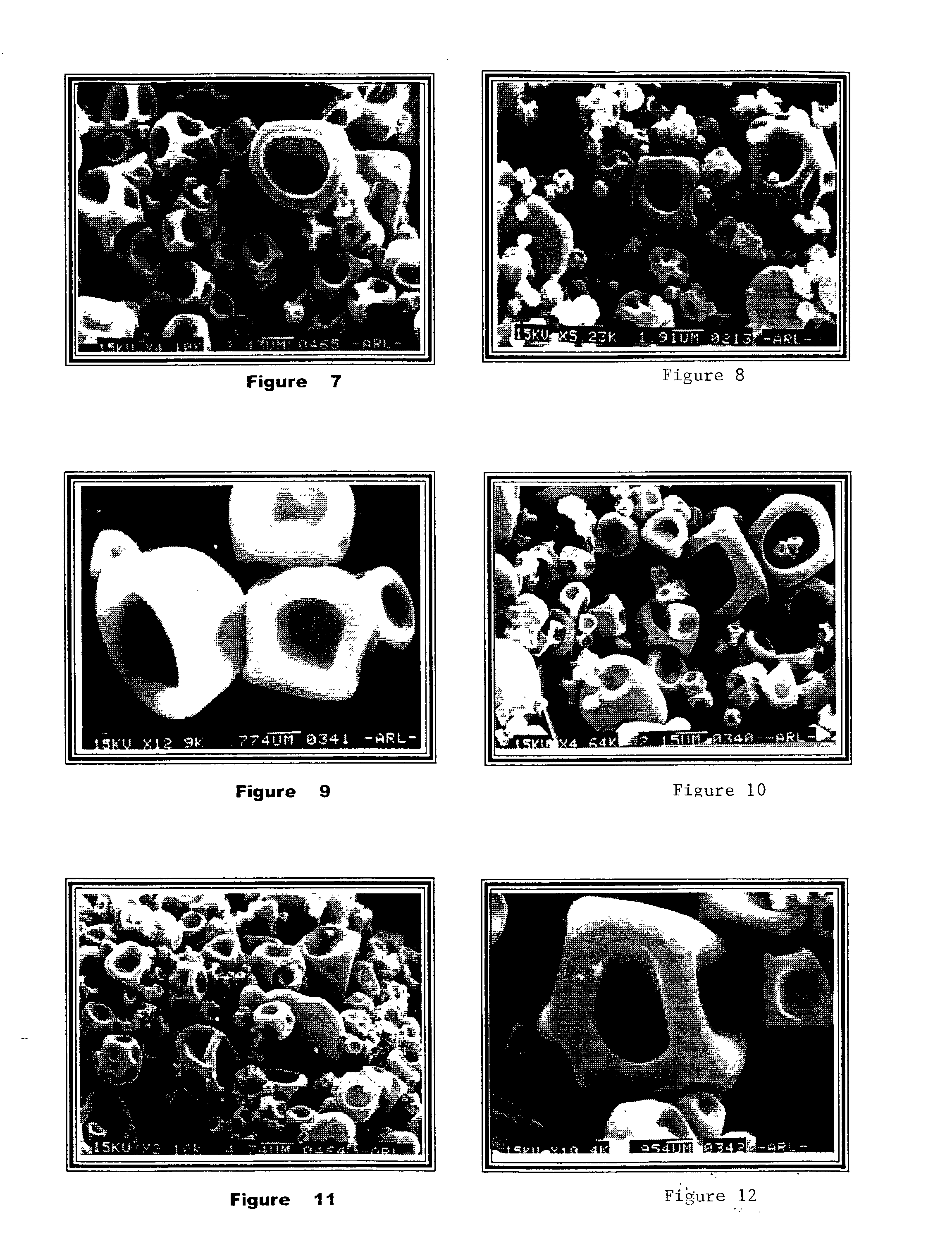Filler for dental composite materials
- Summary
- Abstract
- Description
- Claims
- Application Information
AI Technical Summary
Benefits of technology
Problems solved by technology
Method used
Image
Examples
Embodiment Construction
[0010] FIG. 1 is a SEM image example of doughnut-shaped silica ceramic particles according to the present invention. Mean size being about 5 .mu.m with a few larger particles being about 15 .mu.m.
[0011] FIG. 2 is a SEM image example of doughnut-shaped zirconium silicate ceramic particles. Mean size being about 5 .mu.m.
[0012] FIG. 3 illustrates a SEM image example of alumina doughnut-shaped particles, which have mean size of about 5 .mu.m.
[0013] FIG. 4 illustrates a SEM image example of a mixture of alumina spherical and doughnut-shaped particles with a similar size and distribution.
[0014] FIG. 5 and 6 illustrate SEM image examples of silica doughnut-shaped particles that are coated with zirconium silicate spicules. Mean size being about 5 .mu.m with a few larger particles being about 15 .mu.m.
[0015] FIG. 7 to 12 illustrate SEM image examples of multi-dimpled shaped ceramic particles of zirconium silicate according to the present invention with mean particle size of about 6 to 7 .mu....
PUM
| Property | Measurement | Unit |
|---|---|---|
| Percent by mass | aaaaa | aaaaa |
| Percent by mass | aaaaa | aaaaa |
| Percent by mass | aaaaa | aaaaa |
Abstract
Description
Claims
Application Information
 Login to View More
Login to View More - R&D
- Intellectual Property
- Life Sciences
- Materials
- Tech Scout
- Unparalleled Data Quality
- Higher Quality Content
- 60% Fewer Hallucinations
Browse by: Latest US Patents, China's latest patents, Technical Efficacy Thesaurus, Application Domain, Technology Topic, Popular Technical Reports.
© 2025 PatSnap. All rights reserved.Legal|Privacy policy|Modern Slavery Act Transparency Statement|Sitemap|About US| Contact US: help@patsnap.com



